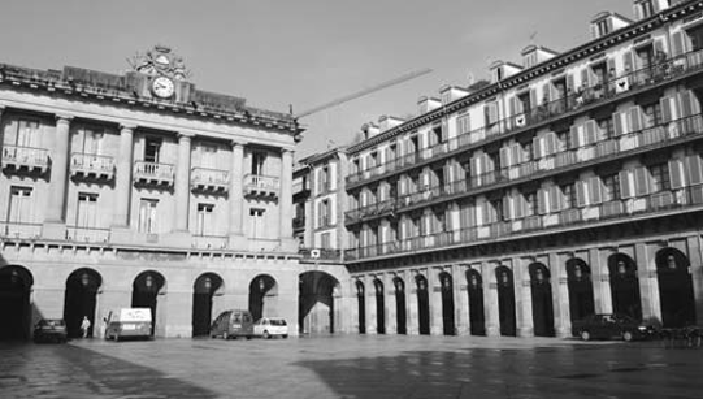Travel Reference
In-Depth Information
AlthoughthestruggleforBasqueindependenceiscurrentlyinarelativelycalmstage,
with most people opposingviolent ETAtactics, there are still underlying tensions between
Spain and the Basque people. In the middle of the Old Town,
Calle Juan de Bilbao
is the
political-action street. Here you'll find people more sympathetic to the struggle (whereas
for others, it's a street to avoid). Speaking Basque is encouraged.
Flagpoles mark
“private eating clubs”
throughout the Old Town (otherwise un-
marked). Basque society is matrilineal and very female-oriented. A husband brings home
his paycheck and hands it directly to his wife, who controls the house's purse strings (and
everything else). Basque men felt they needed a place where they could congregate and
play “king of the castle,” so they formed these clubs where members could reserve a table
andcookfortheirfriends.Theclubsusedtobeexclusively male; womenarenowallowed
as invited guests...but never in the kitchen, which remains the men's domain.
▲
Plaza de la Constitución
TheOldTown'smainsquareiswherebullfightsusedtobeheld.Noticetheseatnumbering
on the balconies: Even if you owned an apartment here, the city retained rights to the bal-
conies, which it could sell as box seats. (Residents could peek over the paying customers'
shoulders.) Above the clock, notice the seal of San Sebastián: a merchant ship with sails
billowing in the wind. The city was granted trading rights by the crown—a reminder of
the Basque Country's importance in Spanish seafaring. Inviting café tables spill into the
square from all corners.

